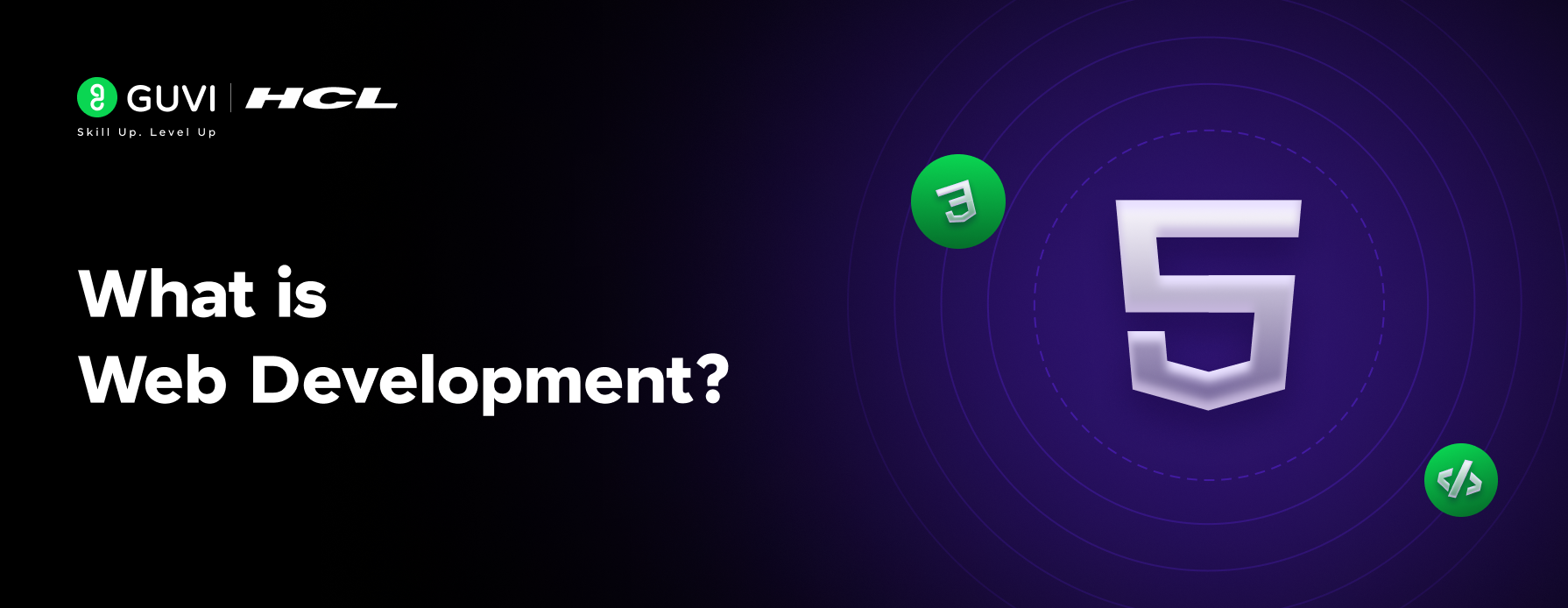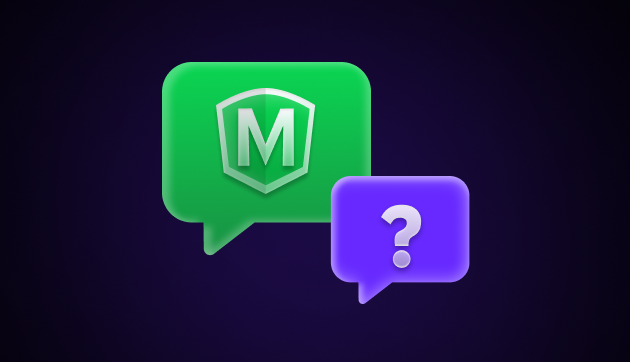![Complete Job Description of a Frontend Developer [2025] 1 Post thumbnail](https://www.guvi.in/blog/wp-content/uploads/2024/02/Top-Frontend-Developers_-Role-Responsibilities-and-Skills.png)
Complete Job Description of a Frontend Developer [2025]
Dec 31, 2024 6 Min Read 2569 Views
(Last Updated)
In today’s digital age, where websites and mobile apps are an integral part of our daily lives, frontend developers play a crucial role in creating the user interfaces that enable us to interact with these platforms.
But what exactly does a frontend developer do, and how can one become proficient in this field?
In this comprehensive guide, we will explore the roles, responsibilities, and job description of a frontend developer to embark on a career in this exciting and in-demand profession.
Table of contents
- Introduction to Frontend Development
- Frontend Developer Job Roles
- 1) Frontend Developer/Engineer
- 2) CSS/HTML Developer
- 3) Frontend JavaScript Developer
- 4) Frontend Web Designer
- 5) Frontend User Interface (UI) Developer/Engineer
- 6) Mobile/Tablet Frontend Developer
- 7) Frontend SEO Expert
- 8) Frontend Accessibility Expert
- 9) Frontend DevOps
- 10) Frontend Testing/QA
- 11) Full Stack Developer
- The Responsibilities of a Frontend Developer
- The Job Description of a Frontend Developer
- HTML & CSS
- JavaScript
- Frameworks and Libraries
- CSS Preprocessors
- Responsive Design
- Cross-Browser Compatibility
- Version Control
- Testing and Debugging
- Command Line
- Web Performance
- Creativity
- Problem-Solving
- The Growing Demand for Frontend Developers
- Salary Expectations for Frontend Developers
- Takeaways...
- What are the responsibilities of front-end and back-end developers?
- What is the role of a front-end lead?
- What is front-end development used for?
- Is Python used in front-end?
Introduction to Frontend Development
Before diving into the specifics of frontend development, it’s important to understand the role it plays in the overall web development process. Frontend development focuses on the visual and interactive aspects of a website or application that users directly engage with.
![Complete Job Description of a Frontend Developer [2025] 2 Frontend Development](https://www.guvi.in/blog/wp-content/uploads/2024/03/Build-projects-1200x628.png)
It involves translating design mockups and wireframes into functional web pages, ensuring that the user interface is visually appealing, user-friendly, and responsive.
Know More About What does a Front End Developer do? A Complete Guide
Before diving into the next section, ensure you’re solid on full-stack development essentials like front-end frameworks, back-end technologies, and database management. If you are looking for a detailed Full Stack Development career program, you can join GUVI’s Full Stack Development Course with placement assistance. You will be able to master the MERN stack (MongoDB, Express.js, React, Node.js) and build real-life projects.
Instead, if you would like to explore JavaScript through a Self Paced course, try GUVI’s JavaScript certification course.
Frontend Developer Job Roles
Now, we will explore the various job titles and roles in the field of frontend development down below:
1) Frontend Developer/Engineer
The most common and generic title for a front-end developer is “Front End Developer” or “Front End Engineer.” These professionals possess a solid understanding of HTML, CSS, the Document Object Model (DOM), and JavaScript.
They are skilled in implementing these technologies on the web platform to create visually appealing and interactive user interfaces.
2) CSS/HTML Developer
A CSS/HTML Developer specializes in HTML and CSS, excluding JavaScript and application development. These professionals have a keen eye for design and are skilled in creating visually stunning web pages.
They work closely with web designers to translate design mockups into HTML and CSS code.
Also Explore: A Complete Guide to HTML and CSS for Beginners
3) Frontend JavaScript Developer
Frontend JavaScript Developers possess advanced programming skills and expertise in building front-end applications. They are proficient in JavaScript and have experience in software development and application building.
These developers play a critical role in creating complex and dynamic web applications.
4) Frontend Web Designer
Frontend Web Designers are skilled not only in front-end development but also in design. They possess a deep understanding of user experience (UX) principles and are proficient in tools like Adobe Photoshop and Sketch.
These professionals are responsible for creating visually appealing and user-friendly interfaces.
Also Read: Top Skills To Become a Full-Stack Developer
5) Frontend User Interface (UI) Developer/Engineer
Frontend UI Developers/Engineers specialize in designing and building user interfaces. They possess expertise in interaction design, wireframing, and general front-end skills.
![Complete Job Description of a Frontend Developer [2025] 3 Frontend User Interface (UI) Developer](https://www.guvi.in/blog/wp-content/uploads/2024/03/collaboration-1200x628.png)
These professionals focus on creating interfaces that are intuitive, aesthetically pleasing, and easy to navigate.
6) Mobile/Tablet Frontend Developer
Mobile/Tablet Frontend Developers have extensive experience in developing front-end applications for mobile and tablet devices. They are well-versed in creating responsive designs and optimizing user interfaces for various screen sizes.
These professionals play a crucial role in ensuring a seamless user experience across different devices.
Find Out 10 Best Frontend Development Frameworks
7) Frontend SEO Expert
Frontend SEO Experts possess in-depth knowledge of search engine optimization (SEO) strategies and techniques. They understand how to structure and optimize front-end code to improve search engine rankings.
These professionals work closely with marketing teams to ensure that websites are easily discoverable by search engines.
8) Frontend Accessibility Expert
Frontend Accessibility Experts specialize in creating websites and applications that are accessible to users with disabilities. They possess extensive knowledge of accessibility standards and guidelines, ensuring that web content is perceivable, operable, and understandable by all users.
9) Frontend DevOps
Frontend DevOps professionals have a deep understanding of software development methodologies and tools that emphasize collaboration, integration, and automation.
They are proficient in tools like Git, Jenkins, and Docker, enabling seamless communication and deployment of front-end code.
10) Frontend Testing/QA
Frontend Testing/QA professionals are responsible for ensuring the quality and functionality of front-end code. They conduct unit testing, functional testing, user testing, and A/B testing to identify and fix bugs or issues.
These professionals play a critical role in delivering a flawless user experience.
Must Explore Top A/B Testing Tools | Don’t miss the obvious 4th one
11) Full Stack Developer
While not specific to front-end development, the term “Full Stack Developer” is often used to describe professionals who are proficient in both front-end and back-end development.
Full Stack Developers possess a broad range of skills and can handle various aspects of web development, from designing user interfaces to building server-side applications.
Also Explore: Best Full-Stack Development Project Ideas
The Responsibilities of a Frontend Developer
Frontend developers are responsible for building and maintaining the frontend of a website or application. They work closely with UI and UX designers to bring their design ideas to life, turning them into functional and visually appealing interfaces.
Some of the key responsibilities of a frontend developer include:
- Website Layout: Frontend developers are responsible for creating the layout of a website, and determining the placement of various elements such as navigation menus, images, videos, and buttons. They ensure that the layout is aesthetically pleasing and intuitive for users to navigate.
![Complete Job Description of a Frontend Developer [2025] 4 Job Description of a Frontend Developer](https://www.guvi.in/blog/wp-content/uploads/2024/03/Website-layout-1200x628.png)
- Styling with CSS: CSS (Cascading Style Sheets) is used by frontend developers to define the visual appearance of a website. They use CSS to control typography, colors, layouts, and other styling aspects to create a cohesive and visually appealing design.
- Implementing Interactivity with JavaScript: JavaScript is a programming language that frontend developers use to add interactivity and dynamic features to web pages. They utilize JavaScript to create interactive elements such as forms, sliders, and animations to enhance the user experience.
- Responsive Design: With the proliferation of mobile devices, frontend developers need to ensure that websites are responsive and adapt seamlessly to different screen sizes. They use responsive design techniques to optimize the layout and functionality of websites on various devices.
- Cross-Browser Compatibility: Frontend developers must ensure that websites work consistently across different web browsers and platforms. They conduct thorough testing to identify and resolve any compatibility issues that may arise.
![Complete Job Description of a Frontend Developer [2025] 5 Cross-Browser Compatibility](https://www.guvi.in/blog/wp-content/uploads/2024/03/Responsive-design-1200x628.png)
- Performance Optimization: Frontend developers optimize web pages for speed and efficiency, minimizing load times and ensuring a smooth user experience. They employ techniques such as code minification, lazy loading, and resource optimization to enhance website performance.
- Accessibility: Accessibility is a crucial aspect of frontend development. Frontend developers adhere to accessibility standards such as WCAG (Web Content Accessibility Guidelines) to ensure that web content is accessible to users with disabilities.
- Version Control and Collaboration: Proficiency in version control systems like Git is essential for frontend developers to track changes, collaborate with other developers, and maintain codebase integrity.
- Testing and Debugging: Frontend developers conduct thorough testing to ensure the functionality and usability of web pages. They troubleshoot and fix issues such as broken links, layout problems, or JavaScript errors to deliver a seamless user experience.
![Complete Job Description of a Frontend Developer [2025] 6 Testing and Debugging](https://www.guvi.in/blog/wp-content/uploads/2024/03/Software-testing-1200x628.png)
- Documentation: Keeping thorough documentation of code and development processes is important for frontend developers to maintain and troubleshoot web applications effectively.
Also Read: Comprehensive List of Project Ideas for Frontend Development
The Job Description of a Frontend Developer
To excel as a frontend developer, you need to possess a strong foundation in technical skills as well as soft skills, these are what hiring managers and companies are on the lookout for.
We will be listing down the top skills that these companies expect you as a frontend developer to have and provide a sort of checklist that you can go through to understand what you must learn and how to succeed in bagging a great role.
Let’s explore the top technical as well as soft skills that every frontend developer should have:
1. HTML & CSS
HTML (HyperText Markup Language) and CSS (Cascading Style Sheets) are the foundational languages of web development. HTML is used for structuring the content of a webpage, while CSS is used for styling and layout.
![Complete Job Description of a Frontend Developer [2025] 7 HTML & CSS](https://www.guvi.in/blog/wp-content/uploads/2024/03/image-1200x628.png)
As a frontend developer, you should have a thorough understanding of HTML tags, attributes, and semantic markup.
Additionally, CSS knowledge is crucial for creating visually appealing designs, implementing responsive layouts, and ensuring cross-browser compatibility.
2. JavaScript
JavaScript is a programming language that enables dynamic and interactive elements on a webpage.
It allows frontend developers to add functionality, handle events, manipulate the DOM (Document Object Model), and interact with APIs (Application Programming Interfaces).
Proficiency in JavaScript is essential for building interactive web applications and creating a seamless user experience.
3. Frameworks and Libraries
Frameworks and libraries are essential tools for frontend developers to streamline their development process and enhance productivity.
Frameworks like Angular, React, and Vue.js provide a structured approach to building complex web applications.
These frameworks offer reusable components, state management, and efficient rendering, making it easier to develop scalable and maintainable frontend code. Additionally, libraries like jQuery provide pre-built functions that simplify common JavaScript tasks.
4. CSS Preprocessors
CSS preprocessors like Sass, Less, and Stylus extend the capabilities of CSS by introducing variables, functions, and mixins.
They make writing and managing CSS code more efficient and maintainable. CSS preprocessors allow frontend developers to write cleaner and more modular CSS, enabling them to reuse code, define consistent styles, and easily make global changes.
5. Responsive Design
In today’s mobile-centric world, responsive design is crucial for creating websites that adapt seamlessly to different screen sizes and devices.
Frontend developers must have a solid understanding of responsive design principles and techniques. They should be able to design and implement responsive layouts using CSS media queries, flexible grids, and fluid images.
Responsive design ensures that websites are visually appealing and functional across various devices, enhancing the user experience.
6. Cross-Browser Compatibility
Frontend developers need to ensure that their websites work consistently across different web browsers, such as Chrome, Firefox, Safari, and Edge.
Each browser has its own rendering engine, which can result in variations in how a webpage is displayed.
To achieve cross-browser compatibility, frontend developers must thoroughly test their websites on different browsers and make necessary adjustments to ensure consistent functionality and appearance.
7. Version Control
Version control systems like Git are essential tools for frontend developers to manage and track changes in their codebase.
Using version control allows developers to collaborate effectively, revert to previous versions of their code, and easily manage different branches of development. Git, in particular, is widely used in the industry and is an essential skill for frontend developers to learn.
8. Testing and Debugging
Testing and debugging are crucial aspects of frontend development. Frontend developers should be proficient in various testing methodologies, such as unit testing and functional testing.
They should be able to write testable code, identify and fix bugs, and optimize the performance of their websites.
Testing frameworks like Mocha and Jasmine can assist frontend developers in automating their testing processes and ensuring the quality of their code.
9. Command Line
While frontend development mostly involves working with graphical user interfaces (GUI), having command line knowledge is beneficial for frontend developers.
The command line allows developers to perform various tasks efficiently, such as navigating file directories, running build scripts, and executing commands.
Familiarity with the command line interface (CLI) enables frontend developers to work more efficiently and effectively in a development environment.
10. Web Performance
Web performance optimization is critical for creating fast and efficient websites. Frontend developers should have a solid understanding of web performance optimization techniques, such as image optimization, code minification, caching, and lazy loading.
![Complete Job Description of a Frontend Developer [2025] 8 Web Performance](https://www.guvi.in/blog/wp-content/uploads/2024/03/optimization-1200x628.png)
By optimizing the performance of their websites, frontend developers can ensure a smooth user experience and improve search engine rankings.
11. Creativity
Frontend development is not just about writing code; it also involves designing visually appealing and user-friendly interfaces so UI/UX knowledge would be real handy.
![Complete Job Description of a Frontend Developer [2025] 9 UI/UX Principles](https://www.guvi.in/blog/wp-content/uploads/2024/03/UI-UX-principles-1200x628.png)
Creativity is crucial for frontend developers to come up with innovative design solutions and think outside the box.
By combining technical skills with creativity, frontend developers can create engaging and memorable user experiences.
12. Problem-Solving
Frontend developers encounter various challenges and problems during the development process. Strong problem-solving skills enable them to analyze issues, identify solutions, and implement effective fixes.
The ability to think critically and troubleshoot technical problems is essential for frontend developers to overcome obstacles and deliver optimal solutions.
The Growing Demand for Frontend Developers
The demand for frontend developers is steadily increasing as businesses recognize the importance of creating visually appealing and user-friendly websites and applications.
With the rise of digital transformation across industries, skilled frontend developers are in high demand. Companies are seeking professionals who can deliver exceptional user experiences and create interfaces that meet the evolving needs of users.
Must Read: Top 10 Tools Every Full-Stack Developer Should Master
Salary Expectations for Frontend Developers
Frontend developers command competitive salaries, reflecting the high demand for their skills. The average salary for frontend developers varies depending on factors such as experience, location, company size, and industry.
![Complete Job Description of a Frontend Developer [2025] 10 Frontend Developers Salary](https://www.guvi.in/blog/wp-content/uploads/2024/03/Salary-1200x628.png)
According to Glassdoor, the average frontend developer salary ranges from INR 5,00,00 per annum to INR 9,00,000 per annum. Senior frontend developers with extensive experience and expertise can earn even higher salaries.
Takeaways…
In conclusion, frontend development offers a rewarding career path for those with a passion for creating visually appealing and interactive websites.
By acquiring the necessary skills, continuously learning, and staying up to date with industry trends, you can embark on a successful journey as a frontend developer.
The demand for frontend developers continues to grow, presenting exciting opportunities for those entering or advancing in this field.
Also Read | 24 Best Frontend Developer Interview Questions & Answers
Kickstart your Full Stack Development journey by enrolling in GUVI’s certified Full Stack Development Course with placement assistance where you will master the MERN stack (MongoDB, Express.js, React, Node.js) and build interesting real-life projects. This program is crafted by our team of experts to help you upskill and assist you in placements. Alternatively, if you want to explore JavaScript through a Self-Paced course, try GUVI’s JavaScript course.
What are the responsibilities of front-end and back-end developers?
The responsibilities of a front-end developer include designing and implementing the user interface of a website or application, while back-end developers focus on server-side logic and database management.
What is the role of a front-end lead?
A front-end lead typically oversees the development of the user interface, coordinates with designers and developers, and ensures adherence to best practices and project timelines.
What is front-end development used for?
Front-end development is primarily used for creating the visual and interactive aspects of websites and web applications, including layout, design, and user experience. Read the article above to learn more.
Is Python used in front-end?
Python is not commonly used in front-end development; it’s primarily utilized for back-end development, scripting, data analysis, and machine learning tasks.































Did you enjoy this article?